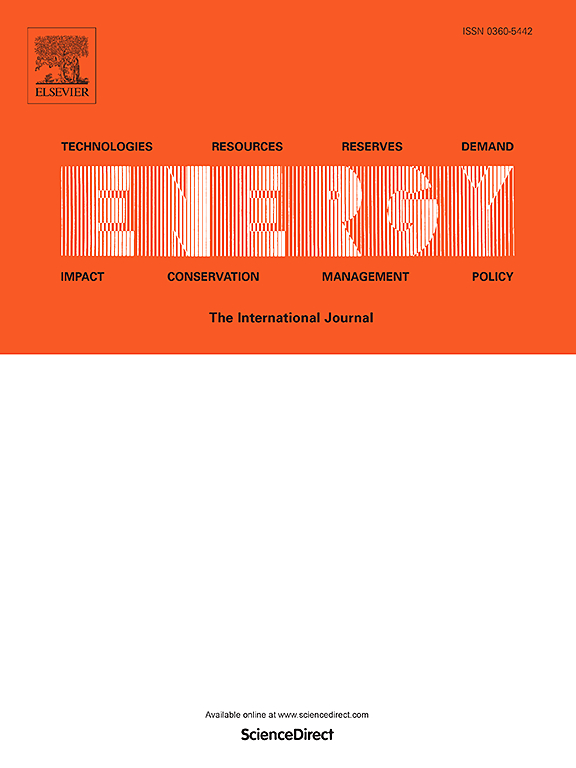Developing a novel city-wide useful energy demand model based on detailed energy conversion processes
IF 9
1区 工程技术
Q1 ENERGY & FUELS
引用次数: 0
Abstract
Understanding urban energy demand at the final-to-useful conversion stage is critical for effective energy transition strategies, yet traditional urban energy demand models often overlook this aspect. This research addresses this gap by developing a novel, city-wide useful work model that integrates over 100 energy conversion processes across 48 end-use sectors, considering each city's economic structure, development level, and energy structure. This model is then applied to 63 cities across Jing-Jin-Ji, Yangtze River Delta, and Pearl River Delta urban agglomerations in China for the years 2010, 2015, and 2020. It finds significant inter-city variations in total and sectoral useful work due to differences in population size, economic output, and climate zones, with the industrial sector generally dominating. Notably, useful work intensity per unit of economic output in northern cities is higher than cities in other regions, due to economic structure and climate factors. Furthermore, it finds that city-wide useful work efficiency ranges from 17.2% to 47.4%, which, although higher than national average, still highlights substantial potential for improvement. This study also identifies a previously unobserved sub-linear relationship between city-wide useful work and economic output, specifically in 2015 and 2020, suggesting potentially weak decoupling between energy use and economic growth. This study advances urban energy demand modeling by integrating socioeconomic data with detailed energy conversion processes, offering critical insights for targeted energy conservation and management policies. This pioneering approach provides a comprehensive assessment of urban energy dynamics, moving beyond traditional energy carrier-focused analyses.
求助全文
约1分钟内获得全文
求助全文
来源期刊

Energy
工程技术-能源与燃料
CiteScore
15.30
自引率
14.40%
发文量
0
审稿时长
14.2 weeks
期刊介绍:
Energy is a multidisciplinary, international journal that publishes research and analysis in the field of energy engineering. Our aim is to become a leading peer-reviewed platform and a trusted source of information for energy-related topics.
The journal covers a range of areas including mechanical engineering, thermal sciences, and energy analysis. We are particularly interested in research on energy modelling, prediction, integrated energy systems, planning, and management.
Additionally, we welcome papers on energy conservation, efficiency, biomass and bioenergy, renewable energy, electricity supply and demand, energy storage, buildings, and economic and policy issues. These topics should align with our broader multidisciplinary focus.
 求助内容:
求助内容: 应助结果提醒方式:
应助结果提醒方式:


